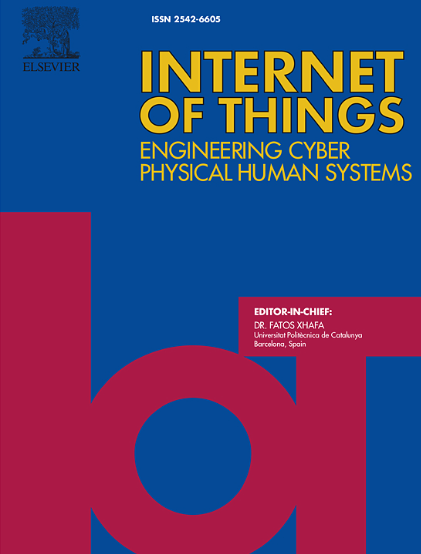量子加密作为安全无线传感器网络的解决方案:路线图,挑战和解决方案
IF 6
3区 计算机科学
Q1 COMPUTER SCIENCE, INFORMATION SYSTEMS
引用次数: 0
摘要
无线传感器网络(WSN)几乎可以从任何地方收集信息,因此它们可以无处不在地部署。然而,在WSN通信框架内的数据传输容易被拦截。因此,有必要创建一个安全的WSN通信环境。多年来,密码学的思想一直被用于安全的数据通信。流行的方案是RSA和哈希函数。然而,随着量子计算领域的重大进展,从传感器节点生成和分发的数据需要无条件的安全性。量子计算还处于早期阶段,但我们可以通过分析量子肖尔算法来评估它对传统密码技术的影响。基于上述问题,本文通过分析无线传感器网络中存在的各种安全问题,对量子密码学进行了阐述。本文综述了基于量子密码学的安全密钥协议、量子不信任通信、量子纠缠和量子隐形传态。分析了各种技术在无线传感器网络中的作用。为了实现高数据安全性和有效的数据传输,提出了一种新的量子WSN (QWSN)架构。我们分析了量子模拟工具、安全攻击以及量子技术对传统密码方法的影响。我们还在IBM quantum Composer (IQC)上展示了量子电路。并对其效益和效果进行了讨论。此外,我们还讨论了WSN在实现量子安全方面存在的问题和挑战。本文确定并强调了几个尚未解决的研究挑战和未来的方向,以推进量子密码学领域的研究和创新。本文章由计算机程序翻译,如有差异,请以英文原文为准。

Quantum cryptography as a solution for secure Wireless Sensor Networks: Roadmap, challenges and solutions
Wireless Sensor Networks (WSN) can collect information from almost everywhere, so they can be deployed ubiquitously. Nonetheless, data transmission within the WSN communication framework is vulnerable to interception. Therefore, it is necessary to create a secure WSN communication environment. The idea of cryptography has been used for years for secure data communication. The popular schemes are RSA and hash functions. However, with the significant advancement in the field of Quantum Computing, there is a need for unconditional security in data generated and distributed from sensor nodes. Quantum computing is in its early stages, but we can evaluate its impact on conventional cryptographic techniques by analyzing the Quantum Shor’s algorithm. Motivated by the aforementioned issues, this paper sheds light on Quantum Cryptography by analyzing various security concerns in WSN. In our work, Quantum Cryptography-based secure key agreement, Quantum Mistrustful communication, Quantum Entanglement and Quantum Teleportation are reviewed. The roles of each technique in association with WSN are analyzed. We proposed a novel Quantum WSN (QWSN) architecture to achieve high data security and effective data transmission. We analyze Quantum simulation tools, security attacks, and the influence of Quantum technology on traditional cryptographic methods. We have also included the demonstrations of quantum circuits on IBM Quantum Composer (IQC). The benefits and results are also discussed. In addition, we also discussed the open issues and challenges in implementing Quantum-based security for WSN. The article identifies and emphasizes several unresolved research challenges and future directions for advancing research and innovation in the domain of Quantum Cryptography.
求助全文
通过发布文献求助,成功后即可免费获取论文全文。
去求助
来源期刊

Internet of Things
Multiple-
CiteScore
3.60
自引率
5.10%
发文量
115
审稿时长
37 days
期刊介绍:
Internet of Things; Engineering Cyber Physical Human Systems is a comprehensive journal encouraging cross collaboration between researchers, engineers and practitioners in the field of IoT & Cyber Physical Human Systems. The journal offers a unique platform to exchange scientific information on the entire breadth of technology, science, and societal applications of the IoT.
The journal will place a high priority on timely publication, and provide a home for high quality.
Furthermore, IOT is interested in publishing topical Special Issues on any aspect of IOT.
 求助内容:
求助内容: 应助结果提醒方式:
应助结果提醒方式:


